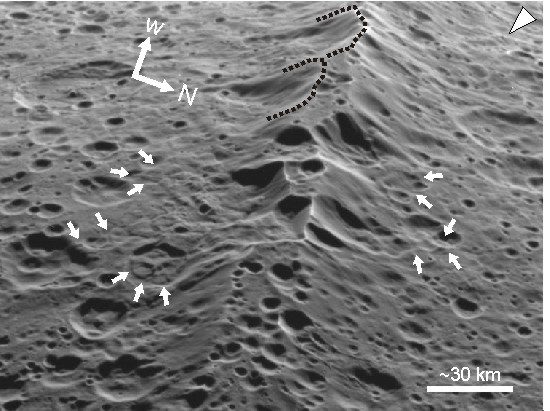Bruce Murray Space Image Library
Large, lobate landslide in Iapetus' Engelier basin

Zoomed high res: Cassini Product ID N1568145272
See also this photo of a blocky landslide
Landslides have also modified Iapetus' ridge:

Bruce Murray Space Image Library

Zoomed high res: Cassini Product ID N1568145272
See also this photo of a blocky landslide
Landslides have also modified Iapetus' ridge:
